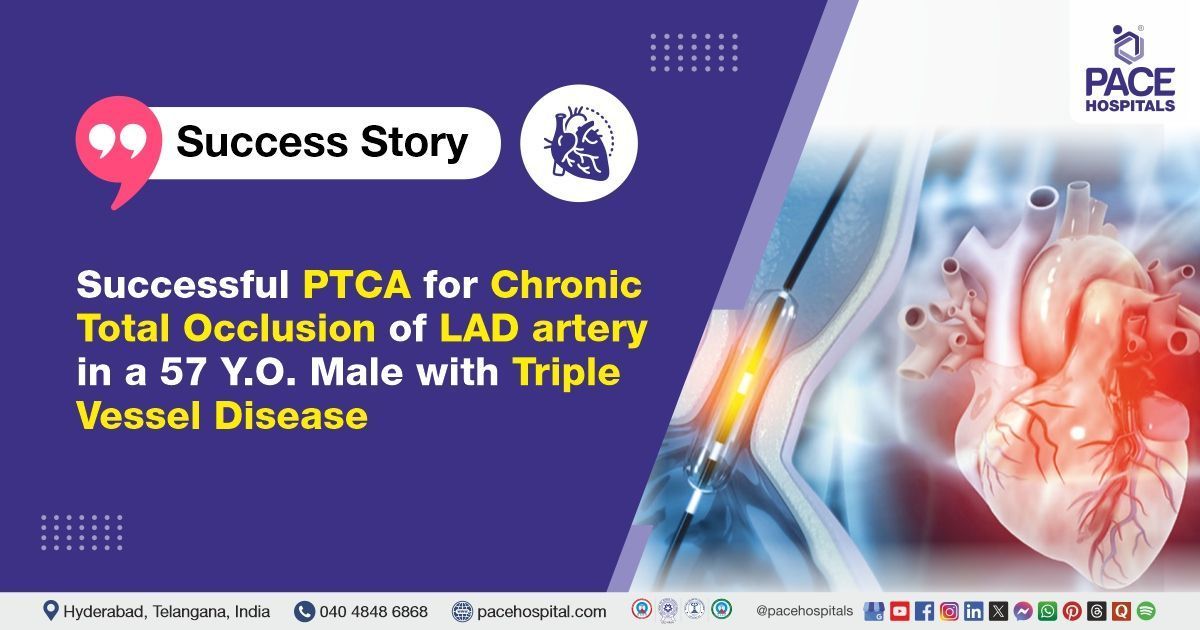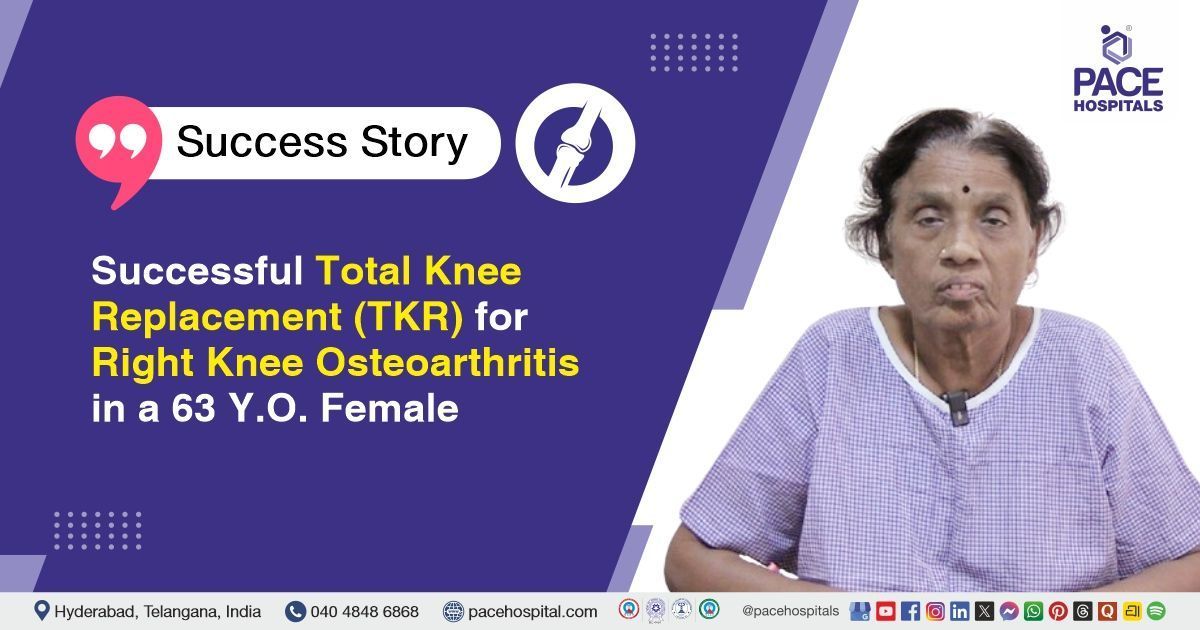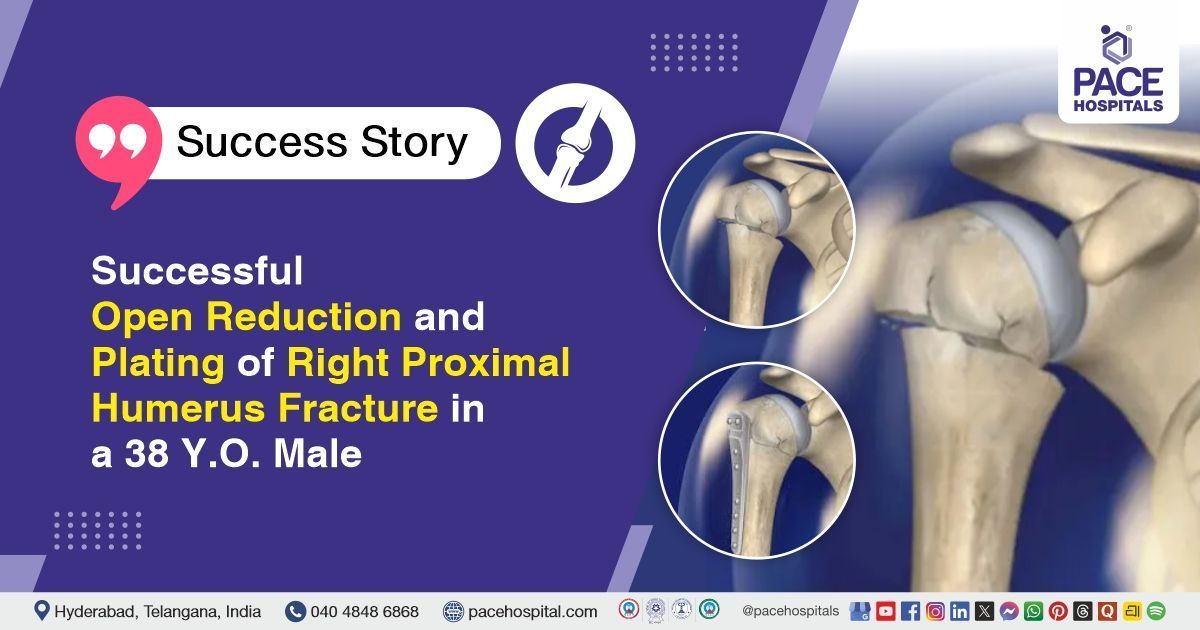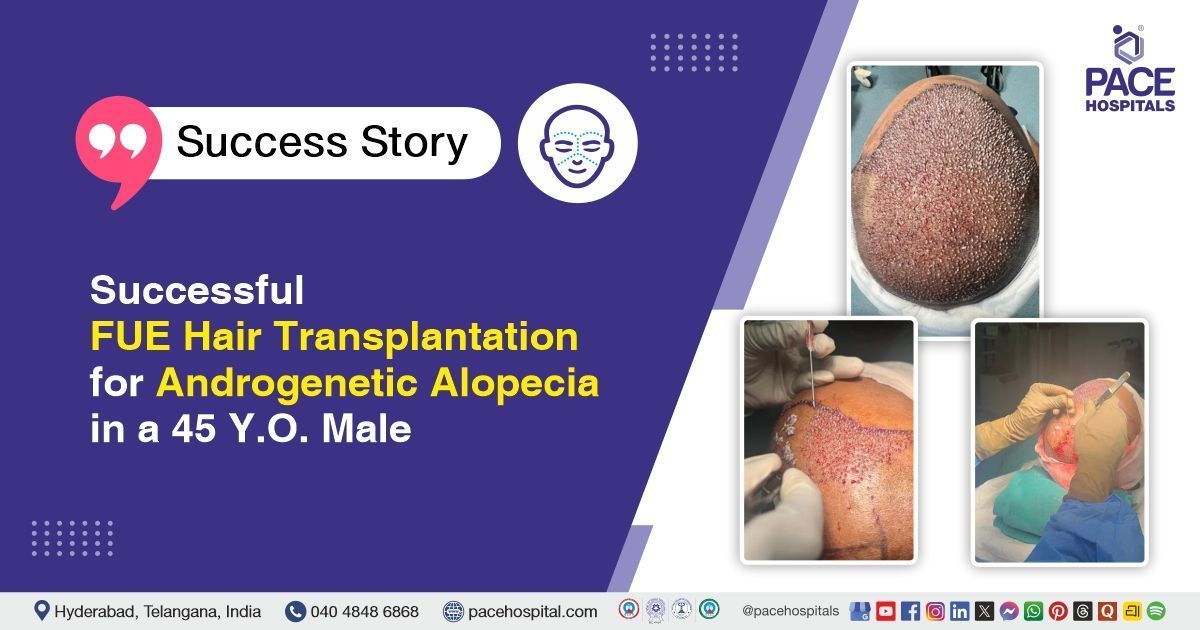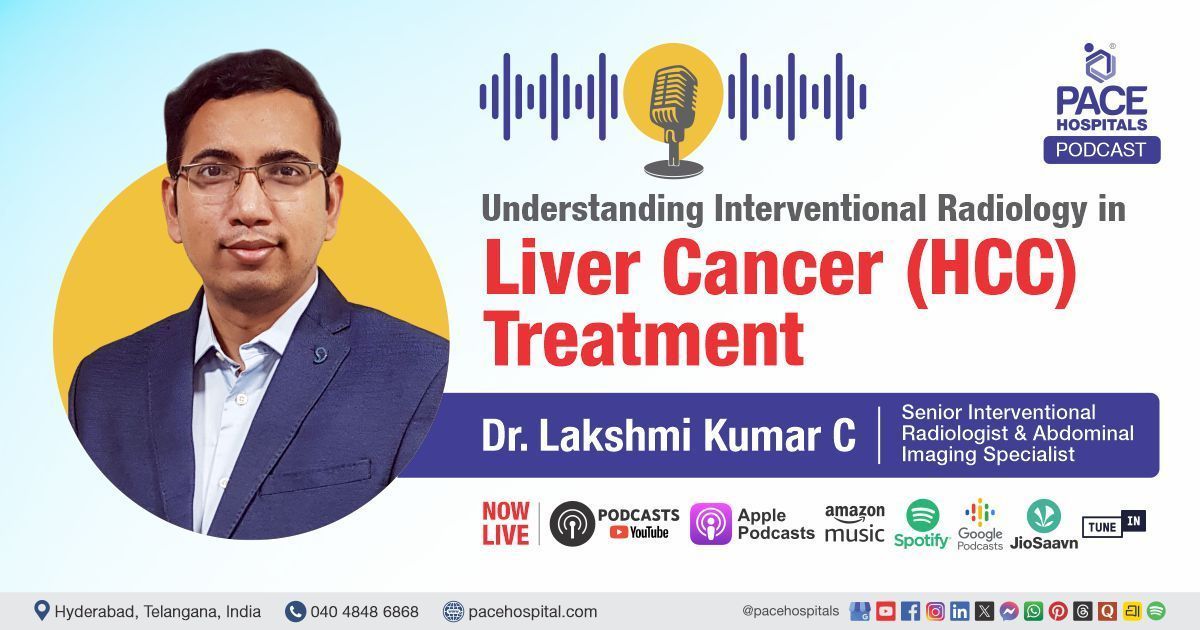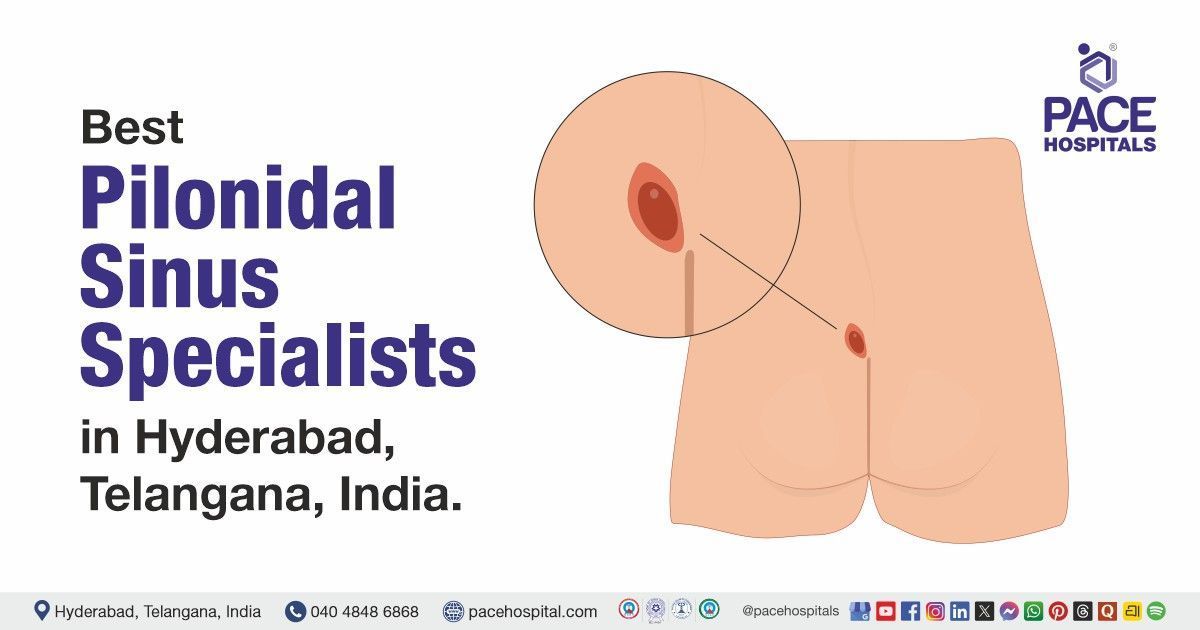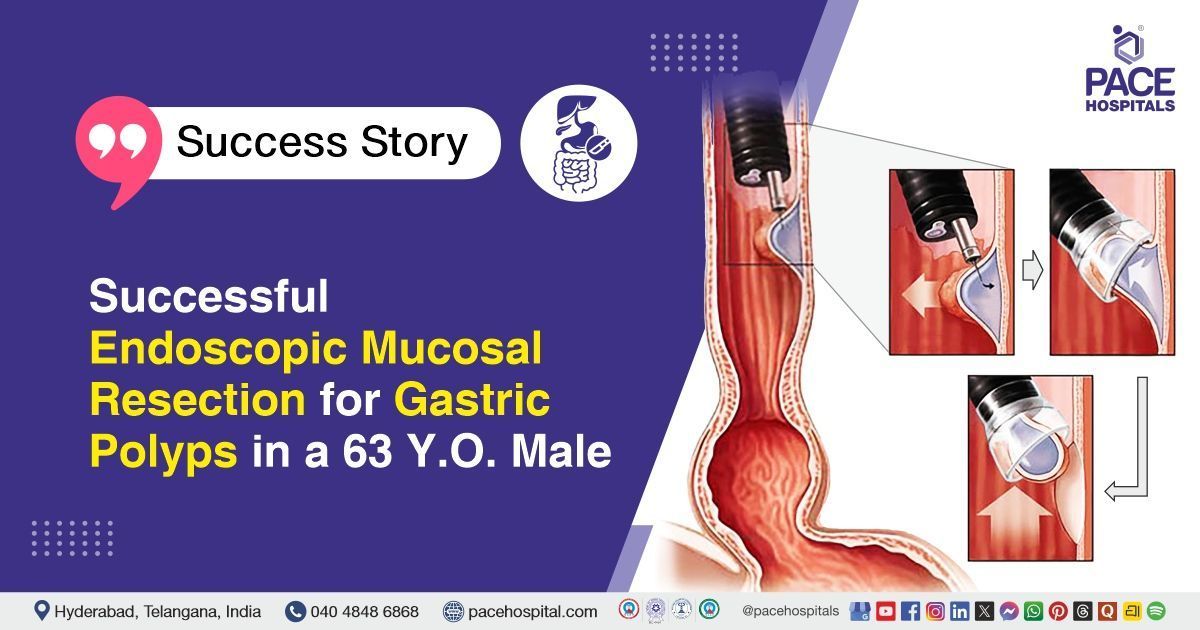Successful PTCA for Chronic Total Occlusion of LAD artery in a 57 Y.O. Male with Triple Vessel Disease
PACE Hospitals
PACE Hospitals’ expert cardiology team successfully performed a
Percutaneous Transluminal Coronary Angioplasty (PTCA) for a Chronic Total Occlusion (CTO) of the Left Anterior Descending (LAD) artery in a 57-year-old male patient who presented with worsening shortness of breath on exertion and chest discomfort over the past two months. The procedure aimed to restore blood flow through the completely blocked artery, relieve symptoms, improve heart function, and reduce the risk of future cardiac events.
Chief Complaints
A 57-year-old male patient with a
body mass index (BMI) of 22 presented to the cardiology Department at
PACE Hospitals, Hitech City, Hyderabad, with complaints of shortness of breath on exertion and chest discomfort for the past two months, with symptoms worsening over the last week.
Past Medical History
The patient is a known case of hypertension (HTN) and diabetes mellitus (DM), both well-controlled with regular medication. These conditions were carefully considered during treatment planning to ensure safe and effective management.
On Examination
On examination, the patient was conscious, coherent, and oriented. The general condition was stable. Cardiovascular examination revealed normal heart sounds (S1 and S2) with no murmurs. Neurological assessment showed no focal deficits. Respiratory system examination was unremarkable with normal bilateral air entry and vesicular breath sounds. Abdominal examination revealed a soft, non-tender abdomen with no organomegaly. Overall, systemic examination findings were within normal limits.
Diagnosis
Upon admission to PACE Hospitals, the patient underwent a comprehensive evaluation, including a detailed review of his medical history and physical examination by the Cardiology team. Given his symptoms of shortness of breath on exertion and chest discomfort, along with a history of hypertension and diabetes mellitus, there was a high clinical suspicion of significant coronary artery disease (CAD) with possible left ventricular dysfunction.
The patient underwent a comprehensive diagnostic evaluation to assess cardiac status. Echocardiography revealed moderate left ventricular dysfunction consistent with heart failure with reduced ejection fraction (HFrEF). Coronary angiography confirmed triple vessel disease (TVD) with chronic total occlusion (CTO) of the left anterior descending (LAD) artery.
Based on the confirmed findings, the patient was advised to undergo
Coronary Artery Disease (CAD) Treatment in Hyderabad, India, under the expert care of the Cardiology Department.
Medical Decision Making
After a detailed consultation with Dr. Seshi Vardhan Janjirala, Consultant Interventional Cardiologist, a comprehensive evaluation was conducted focusing on the patient’s cardiac condition along with his history of hypertension and diabetes mellitus. Clinical and diagnostic findings confirmed significant coronary artery disease with triple vessel involvement, including chronic total occlusion (CTO) of the left anterior descending (LAD) artery and moderate left ventricular dysfunction consistent with heart failure with reduced ejection fraction (HFrEF).
It was determined that Percutaneous Transluminal Coronary Angioplasty (PTCA) to the CTO of the LAD was identified as the most appropriate intervention to relieve symptoms, improve cardiac function, and reduce the risk of further complications.
The patient and his family were informed about his diagnosis, the planned PTCA procedure, associated risks, and expected benefits aimed at preserving heart function and improving his overall prognosis.
Surgical Procedure
Following the decision, the patient was scheduled for Percutaneous Transluminal Coronary Angioplasty (PTCA) Procedure in Hyderabad at PACE Hospitals for Chronic Total Occlusion (CTO) of the Left Anterior Descending (LAD) Artery under the expert care of the Cardiology Department.
The procedure involved the following steps:
- Patient Preparation and Anaesthesia: The patient was positioned supine on the catheterization table. After confirming consent and explaining the procedure, local anesthesia was administered at the vascular access site (commonly the femoral or radial artery). Continuous monitoring of vital signs (ECG, blood pressure, oxygen saturation) was initiated.
- Vascular Access and Guidewire Insertion: Using sterile technique, the vascular sheath was inserted into the chosen artery (radial/femoral). A diagnostic coronary catheter was advanced to the coronary ostium under fluoroscopic guidance. Initial coronary angiography was performed to delineate coronary anatomy and confirm CTO in the LAD artery.
- Crossing the CTO Lesion: Specialized guidewires with high torque and flexibility were used to attempt to cross the total occlusion in the LAD artery. Various techniques, such as antegrade wiring, the use of microcatheters, or a retrograde approach (if required) were employed to successfully navigate through the occlusion.
- Balloon Angioplasty: Once the guidewire crossed the lesion, a balloon catheter was advanced over the wire to the site of occlusion. The balloon was inflated gradually to dilate the blocked segment and restore blood flow. Multiple balloon inflations might have been performed to achieve optimal lumen expansion.
- Stent Deployment: After successful balloon angioplasty, a drug-eluting stent was positioned across the previously occluded segment. The stent was deployed by inflating the balloon, ensuring proper expansion and apposition to the vessel wall. Post-dilatation with a balloon catheter was performed if necessary to optimize stent placement.
- Final Angiographic Assessment and Hemostasis: A final
angiogram was obtained to confirm restoration of adequate blood flow in the LAD artery without complications such as dissection or perforation. The catheters and sheath were withdrawn carefully. Hemostasis was achieved using manual compression or closure devices, depending on the vascular access site. The patient was shifted to the recovery area for close monitoring.
Postoperative Care
The procedure and post-procedure course were uneventful. The patient was managed with antihypertensive and antidiabetic medications to maintain stable blood pressure and optimal glycemic control. Dual antiplatelet therapy was initiated to prevent thrombosis and in-stent restenosis, along with statins to manage cholesterol and reduce cardiovascular risk. The vascular access site was monitored regularly for complications, and supportive care was provided. After a stable recovery, the patient was discharged in stable condition with detailed instructions.
Discharge Medications
Upon discharge, the patient was prescribed an antispasmodic agent to relieve muscle spasms and abdominal discomfort. A combination medication containing antihypertensive, antidiabetic, and lipid-lowering agents was given to manage blood pressure, blood sugar, and cholesterol levels. An antiplatelet and a beta-blocker were prescribed to reduce cardiovascular risk and control heart rate and blood pressure. Additionally, an angiotensin receptor blocker with a diuretic was included to manage hypertension and fluid retention. A gastrointestinal protective agent and a mucolytic-bronchodilator syrup were also prescribed to protect the stomach and ease breathing.
Emergency Care
The patient was informed to contact the emergency ward at PACE Hospitals in case of any emergency or development of symptoms such as chest pain, abdominal pain, and fever.
Review and Follow-up Notes
The patient was advised to return for a follow-up visit after 2 months with the cardiologist in Hyderabad at PACE Hospitals, to review his condition.
Conclusion
This case demonstrates the effectiveness of a comprehensive pharmacological approach in managing coexisting hypertension, diabetes, and cardiovascular risk, stabilizing the patient’s condition and preventing complications, highlighting the importance of individualized therapy and coordinated multidisciplinary care.
Effectiveness of Percutaneous Transluminal Coronary Angioplasty (PTCA) in Managing Chronic Total Occlusion (CTO)
Percutaneous Transluminal Coronary Angioplasty (PTCA), especially in cases of chronic total occlusion (CTO), is a technically demanding but highly effective procedure. It helps restore blood flow to areas of the heart affected by blocked arteries, often resulting in symptom relief and improved heart function. Patients with reduced heart function particularly benefit from this revascularization, which can enhance myocardial viability and alleviate symptoms such as shortness of breath and chest pain. When performed by an experienced
Cardiologist / Heart specialist with careful patient selection, PTCA offers a safe, less invasive alternative to coronary artery bypass surgery and is associated with favorable clinical outcomes.
Share on
Request an appointment
Fill in the appointment form or call us instantly to book a confirmed appointment with our super specialist at 04048486868

